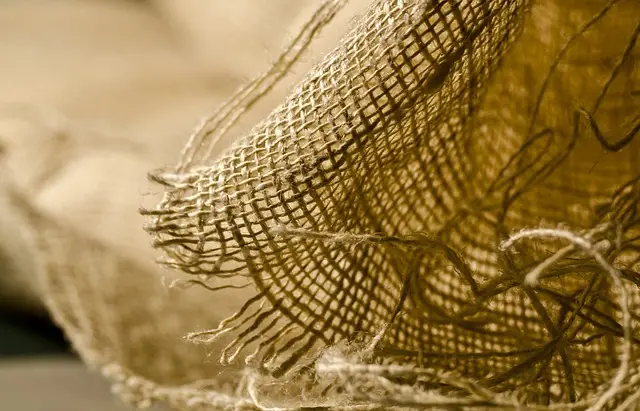Red Bali Kratom and Maeng Da Kratom are distinct strains of Mitragyna speciosa known for their anti-inflammatory properties. Red Bali is favored for its relaxing and analgesic effects, primarily due to its alkaloids like 7-hydroxymitragynine, which engage with opioid receptors to manage chronic inflammation and pain without stimulant side effects. It's particularly helpful for conditions such as arthritis and muscle soreness. The kratom's potential anti-inflammatory influence on the immune system could modulate excess inflammation responses, available in various forms including capsules, powder, and tea. Maeng Da, known as "Pimp Grade," offers a more balanced euphoric and relaxing experience with a high alkaloid content, particularly mitraphylline and 7-hydroxymitragynine, contributing to its potent analgesic effects. Clinical observations suggest Maeng Da may offer swift inflammation relief. Users should carefully select between Red Bali and Maeng Da based on their personal health needs and preferences for pain management and anti-inflammatory benefits. Always consult healthcare professionals before using kratom, as it can interact with other medications.
Exploring the anti-inflammatory properties of kratom supplements, this article delves into the efficacy of Red Bali and Maeng Da strains in managing inflammation. The potential benefits of these natural remedies are examined, with a focus on how they can offer relief from inflammatory responses and pain. Through an analysis of their effects, readers will gain insight into the differences between Red Bali Kratom and Maeng Da Kratom, particularly in mitigating inflammation, and can make informed decisions about which strain may best suit their needs.
- Unraveling the Potential of Red Bali Kratom for Inflammation Management
- The Impact of Maeng Da Kratom on Inflammatory Responses and Pain Relief
- Comparative Analysis: Weighing the Effects of Red Bali vs. Maeng Da Kratom in Mitigating Inflammation
Unraveling the Potential of Red Bali Kratom for Inflammation Management

Red Bali Kratom has garnered attention in the realm of natural supplements for inflammation management, offering a potential alternative to traditional treatments. The alkaloids present in Red Bali Kratom, such as 7-hydroxymitragynine and mitragynine, are believed to interact with the body’s opioid receptors, providing anti-inflammatory effects that can help reduce inflammation throughout the body. Unlike its counterpart Maeng Da Kratom, which is known for its invigorating properties, Red Bali Kratom is often favored for its relaxing and analgesic qualities. Users report that it provides a gentle yet potent effect, making it suitable for managing chronic inflammation and pain without the overpowering stimulant effects associated with Maeng Da. The anti-inflammatory potential of Red Bali Kratom is attributed to its ability to modulate the immune response, thereby helping to alleviate conditions characterized by excess inflammation, such as arthritis, muscle soreness, and other inflammatory diseases. Users typically experience these benefits by ingesting Red Bali Kratom in various forms, including capsules, powder, or tea, allowing for tailored dosages to meet individual needs. Research continues to explore the mechanisms behind its anti-inflammatory properties, potentially uncovering new applications and providing insights into how it might be used synergistically with other therapeutic interventions.
The Impact of Maeng Da Kratom on Inflammatory Responses and Pain Relief

Maeng Da Kratom, a strain derived from the Mitragyna speciosa tree, has garnered attention for its potential effects on inflammatory responses and pain relief. Unlike other kratom strains, Maeng Da is renowned for its high alkaloid content, particularly mitraphylline and 7-hydroxymitragynine, which are believed to interact with the body’s opioid receptors, leading to analgesic effects. These interactions may contribute to a reduced inflammatory response by modulating the immune system’s activity. Users often report significant pain relief, making Maeng Da a popular choice for those seeking natural alternatives to manage chronic pain conditions.
When considering the impact of Maeng Da Kratom in the context of inflammation reduction, it is worth comparing it with other strains such as Red Bali Kratom. While both are potent in their effects, the alkaloid profiles and resulting experiences can differ. Red Bali Kratom is known for its sedating properties and extensive analgesic benefits, which can also be beneficial for inflammation-related pain. However, individuals may find that Maeng Da offers a more invigorating effect alongside pain relief, which can be advantageous for those who need to maintain energy levels while managing their condition. The choice between Maeng Da and Red Bali Kratom often comes down to the specific effects desired and personal tolerance levels. It is crucial for individuals to consult with healthcare professionals before incorporating kratom into their wellness routine, as it can interact with other medications and may not be suitable for everyone.
Comparative Analysis: Weighing the Effects of Red Bali vs. Maeng Da Kratom in Mitigating Inflammation

Red Bali and Maeng Da kratom are two potent strains frequently studied for their anti-inflammatory properties. Users and researchers alike have conducted comparative analyses to understand how each strain affects inflammation differently. Red Bali Kratom is known for its relaxing and analgesic effects, which may be attributed to its higher alkaloid content, particularly 7-hydroxymitragynine, a compound with potent anti-inflammatory effects. This strain’s ability to modulate the immune response can lead to significant reductions in inflammation, making it a popular choice for those seeking relief from chronic inflammatory conditions. On the other hand, Maeng Da Kratom, often referred to as “Pimp Grade,” is celebrated for its balance of stimulating and relaxing effects. Its unique alkaloid profile, which includes mitragynine and 7-hydroxymitragynine in a particularly high concentration, contributes to its anti-inflammatory potential. Clinical observations suggest that Maeng Da may be particularly effective in acute scenarios where rapid inflammation reduction is required. Both strains exhibit anti-inflammatory properties, yet their distinct alkaloid compositions result in different user experiences and therapeutic applications, making the choice between Red Bali and Maeng Da a matter of personal preference and specific health needs when considering kratom for inflammation mitigation.
Red Bali and Maeng Da kratom supplements have demonstrated potential in reducing inflammation, with each offering distinct benefits. The comparative analysis highlights that both strains can effectively alleviate inflammatory responses and provide pain relief; however, individual experiences may vary. Red Bali kratom tends to offer a calming effect alongside its anti-inflammatory properties, while Maeng Da is known for its invigorating qualities combined with potent anti-inflammatory effects. Users considering these natural supplements should consult healthcare professionals to determine the most suitable option based on their specific needs and health status. It’s clear that further research is warranted to fully understand the scope of these kratom strains’ efficacy in inflammation management, yet the current evidence supports their consideration as a complementary approach in addressing inflammatory conditions.






